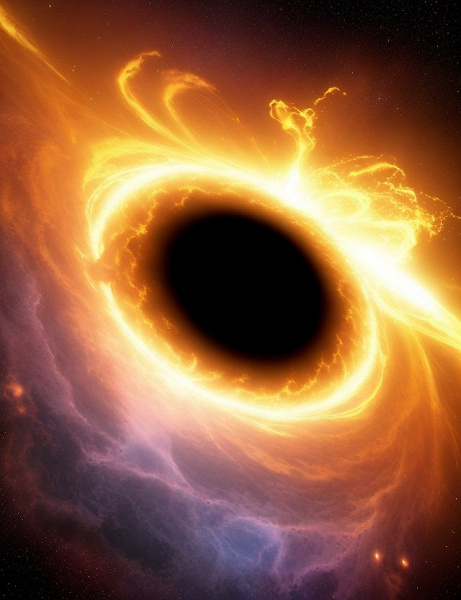Periodic flashes of gamma rays are a possible new link in the study of black holes
Gamma rays regularly observed from the vicinity of Sagittarius A*, the black hole at the center of the Milky Way, are of interest to astrophysicists. Gustavo Magallanes-Guion and Sergio Mendoza's research confirmed the presence of periodic pulses of this radiation.
Previous studies have shown that at the center of our galaxy there is a relatively stable supermassive black hole, Sagittarius A*. Unlike many other supermassive black holes at the center of other galaxies, Sagittarius A* does not attract large amounts of matter and does not form a jet of plasma.
In a new study, scientists have discovered a ring-shaped cloud of gas orbiting Sagittarius A* at a distance roughly comparable to the distance from Mercury to the Sun.
An important discovery took place in 2021, when scientists were able to identify gamma radiation emanating from the vicinity of Sagittarius A*. Scientists already knew that the black hole itself is not the source of this radiation, since black holes do not emit. However, the purpose of this study was to determine the source of this gamma radiation.
Scientists analyzed publicly available data obtained from the Fermi Gamma-Ray Space Telescope between June and December 2022. Their analysis included processing and searching for patterns.
The researchers found that every 76.32 minutes, a pulse of gamma rays emanating from an object close to Sagittarius A* reaches Earth. These pulses have a periodicity equal to about half that of recorded X-ray bursts, which also originate from the vicinity of Sagittarius A*. This indicates a connection between these processes.
Scientists suggest that both the gamma ray and X-ray flare phenomena are likely associated with a cloud of gas orbiting Sagittarius A* at nearly 30% of the speed of light. They also suggest that this cloud may emit at different wavelengths and periodically flare as it moves.

